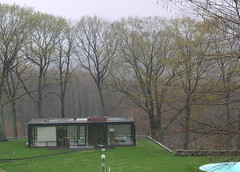It was a long weekend and at the end of it I caught a wicked bug that my son brought home from somewhere and that knocked me flat. All day Monday and all day Tuesday. The one time I took my temperature, the thermometer read 88.6, which meant it was either broken or I was dead. On the other hand I had my annual physical right before I collapsed, and all indications – blood pressure, EKG, etc. – are that in general I’m not deteriorating, which is all I can ask for.
There was a fair amount of news in the interim, very little of which I have the strength to comment on. Also, today is this blog's second anniversary. As of now we've had between 76,000 and 85,000 page views, and 50,000 "unique" visitors. A year ago the comparable numbers were 25,000 page views and 14,000 unique visitors. In other words, we had 50,000 or more page views over the past year (more than double the first year) and 36,000 unique visitors (or about 2.5 times as many as the first year). But enough about me...
Here's what's been happening:
The Nature Conservancy’s deer-hunting program at the Devil’s Den Preserve, in Weston,
appears to be working, judging from the re-emergence of certain wildflowers that browsing deer had wiped out. On the other hand, a deer-culling program in Lloyd Harbor has been the
target of animal rights protestors.
The Connecticut Post
outlines New York State’s role in the Broadwater review and says, correctly, that the real attention from now on will be focused not on the Federal Energy Regulatory Commission, which everyone believes is a rubber stamp, but on New York and the courts.
Harbors in Connecticut need to be dredged to make sure there’s enough water for boats to get in and out. To make it easier (that is, cheaper) to dredge, lots of towns in Connecticut want to be able to dump their dredge spoils in Long Island Sound, and they want to repeal the federal law that regulates dumping.
Here’s a vastly imbalanced news account of the issue, in which the reporter asserts without a shred of evidence that the regulations have been “catastrophic” for businesses. Which businesses specifically have suffered catastrophic losses? I have no idea, nor apparently does the author. My opinion is that if environmental laws are reasonable and businesses suffer because of them, then the businesses are unsustainable. But I can't even say that in this case, because there's no evidence that any businesses have suffered. So take it all with a grain of salt.
The town of Oxford and the Connecticut DEP are
stenciling storm drains to let people know that whatever they dump in the drains ends up in Long Island Sound and other waterways.
Robert Miller, of the Danbury New Times,
writes about Joop Varekamp and his ideas about the early Dutch, fur trading, global warming and hat making.
If you haven’t been to New Haven lately, the local museums have three shows worth checking out. There’s also the general scene in and around Yale, and particularly on Chapel Street, which though on a small scale in many ways is what a city street should be: it’s lively, it’s pleasant to walk along, and there are interesting things to see outside (Yale’s Gothic buildings, for example) and inside.
This show,
“To Know The Dark,” is small and beautiful, with gems by Childe Hassam, Winslow Homer, Edward Hopper and others.
This Canaletto show is bigger; it was interesting to me for its depictions of what London was like in the 1700s. We also went to
this architecture show, which was a bit disappointing because of a preponderance of glowing architectural photos (you know the kind – taken from outside at twilight with snow on the ground and the incandescent lights on indoors) culled from Dwell and other magazines.
In all, a very pleasant way to spend two hours, and we emerged at twilight to a sky that was a beautiful dark blue and a new moon that glittered over the vast parking lots and strip developments along I 95 as we drove home.






